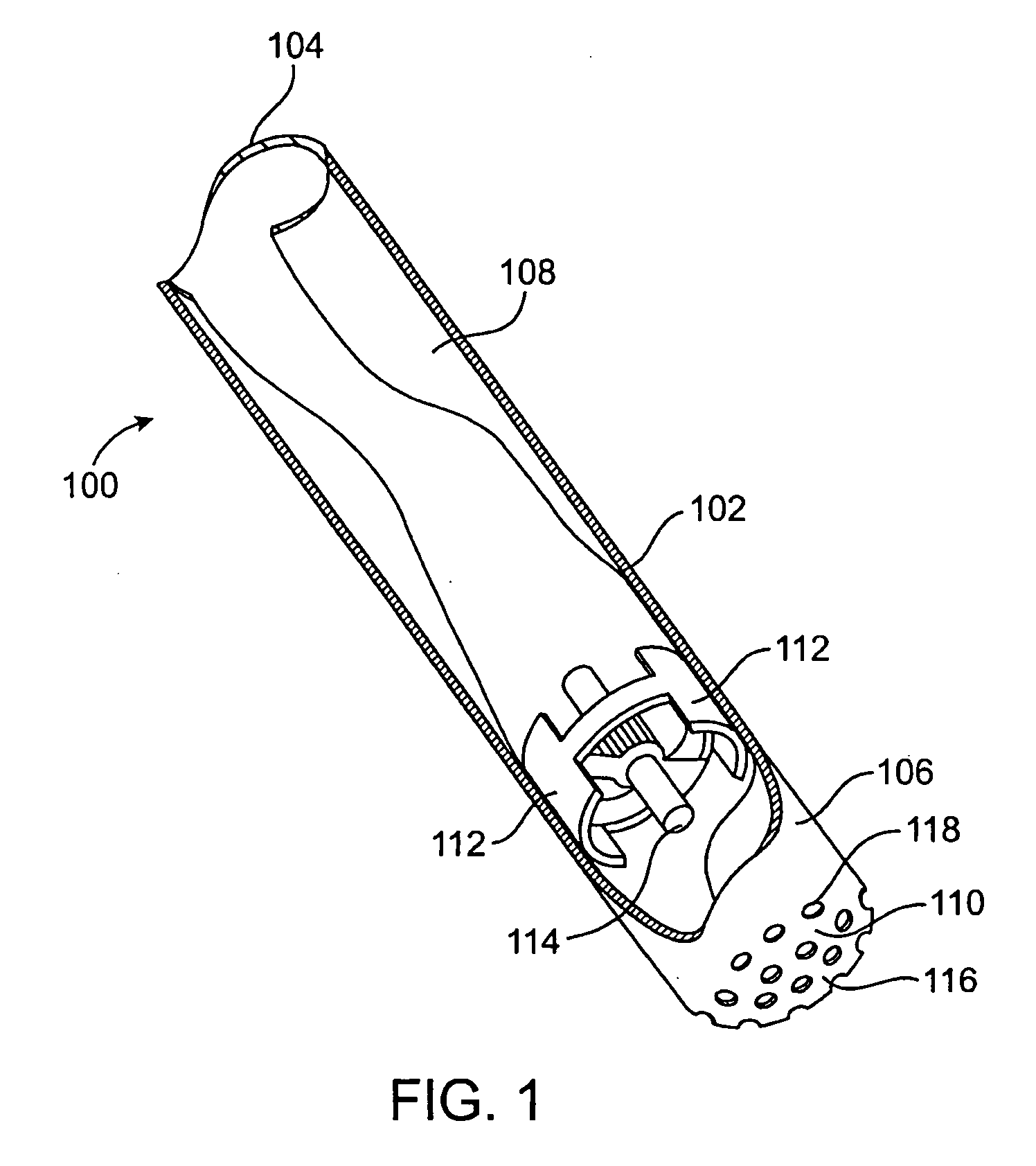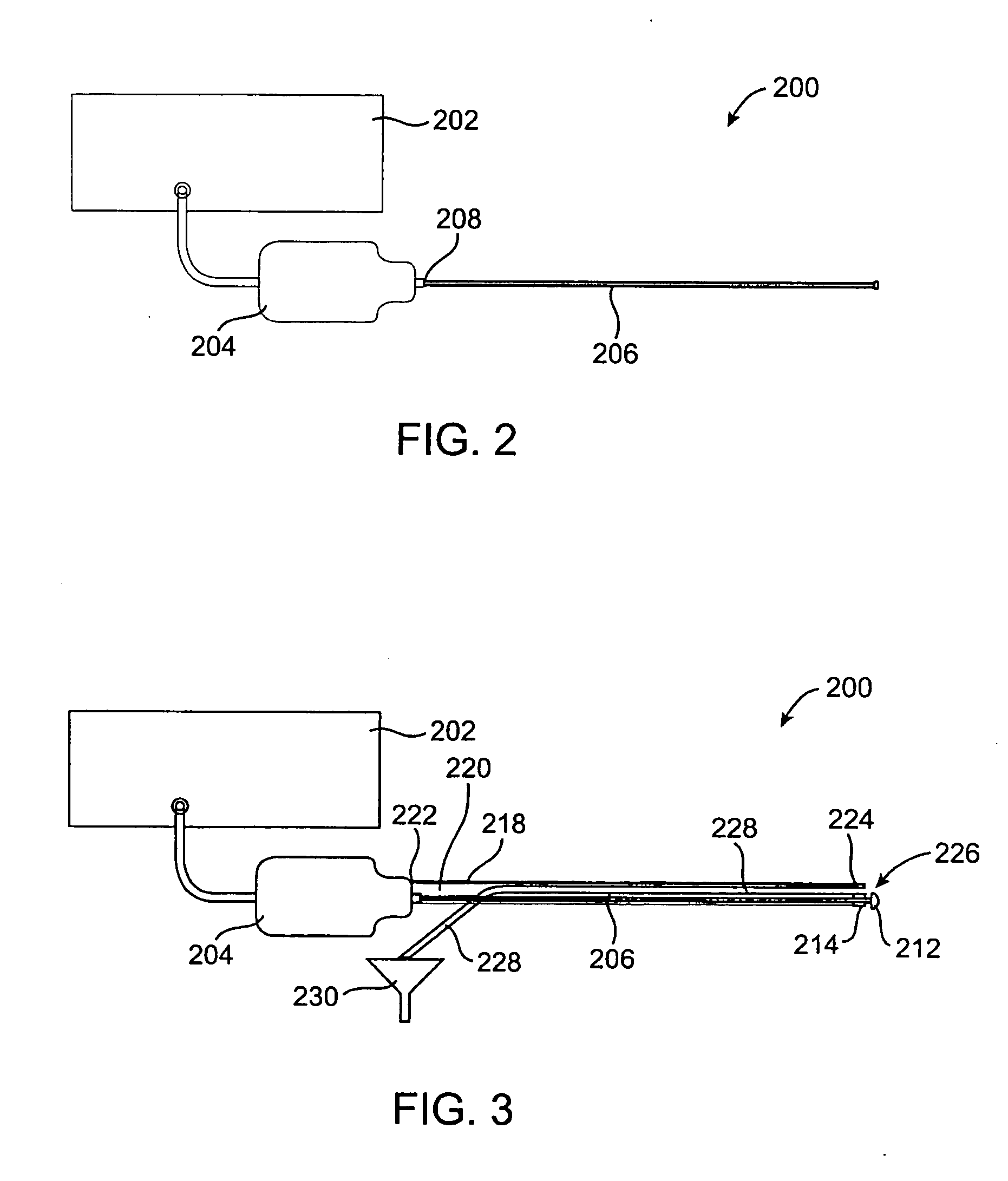Fat removal and nerve protection device and method
a nerve protection device and fat removal technology, applied in the field of fat removal and nerve protection device and method, can solve the problems of increasing the difficulty of applying these techniques to all qualified patients, the danger level of the patient's coronary arteries, and the severe consequences of mishaps
- Summary
- Abstract
- Description
- Claims
- Application Information
AI Technical Summary
Benefits of technology
Problems solved by technology
Method used
Image
Examples
Embodiment Construction
[0064] Referring to the drawing figures, like reference numerals designate identical or corresponding elements throughout the several figures.
[0065]FIG. 1 illustrates a cross-sectional view of a first exemplary embodiment 100 of a fat removal and nerve protection device in accordance with the present invention. Device 100 includes a cannula 102 including a proximal end 104, a distal end 106, and an aspiration or suction lumen 108 extending between the proximal and distal ends. A source of vacuum (not illustrated) is fluidly connected to lumen 108 to aspirate all the fat and fluid which enters into the lumen. Device 100 further includes a protective mesh 110 extending from or a part of the distal end 106 of the cannula 102, which includes openings 118 of a size preselected to allow fatty tissues and fat cells to extrude through the mesh, while preventing nerves, as well as blood vessels of certain sizes from entering into the cannula, as will be described in greater detail below.
[0...
PUM
 Login to View More
Login to View More Abstract
Description
Claims
Application Information
 Login to View More
Login to View More - R&D
- Intellectual Property
- Life Sciences
- Materials
- Tech Scout
- Unparalleled Data Quality
- Higher Quality Content
- 60% Fewer Hallucinations
Browse by: Latest US Patents, China's latest patents, Technical Efficacy Thesaurus, Application Domain, Technology Topic, Popular Technical Reports.
© 2025 PatSnap. All rights reserved.Legal|Privacy policy|Modern Slavery Act Transparency Statement|Sitemap|About US| Contact US: help@patsnap.com



